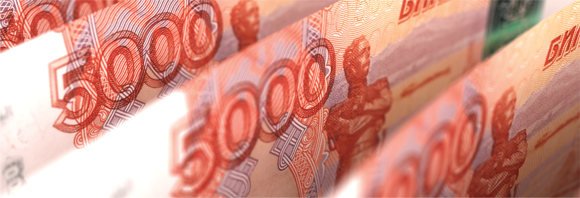Service functions
The Loan Portfolio Structure

For a number of years, Russian Railways has been optimising the structure of its debt portfolio and reducing the cost of borrowing.
has increased to
In the reporting year Russian Railways has repaid borrowings in the amount of 118 billion RUB, including short-term loans raised during the year. At the year-end, the share of the long-term part of the debt portfolio (where the maturity is over 3 years) was 71%, which is the highest it has been since 2008. The share of debt with a maturity of less than one year is only 7%, which is less than half the figure of the previous year.
The intention is to maintain the loan repayment amount at a comfortable level – from 50 to 80 billion RUB per year. In the reporting year, Russian Railways has repaid borrowings in the amount of 118 billion RUB, including short-term loans raised during the year.
The debt portfolio size (the debt accounting for the foreign exchange gains and losses but without accrued interest) by the end of 2013 was higher than in 2012 by RUB 193.3 billion. This increase is mainly attributable to the placement of infrastructure bonds in the amount of RUB 150 billion. However, RUB 50 billion of this amount was raised in the form of advance financing for the 2014 investment programme. Thanks to the unique maturity of infrastructure bonds, varying from 15 to 30 years, the average maturity period of the portfolio in 2013 nearly doubled and exceeded 9 years.
For a number of years, Russian Railways has been conducting preliminary work in order to optimise its loan portfolio structure and reduce borrowing costs. Thus, at the end of 2008, more than 55% of debt portfolio consisted of short-term borrowings with a maturity period of less than 1 year (taken in difficult macroeconomic conditions). These borrowings were gradually replaced by long-term and cheaper sources such as corporate bonds and Eurobonds. As a result of such refinancing, at the end of 2013 the share of short-term borrowings was reduced to 7% and the average payback time was more than 9 years, which was the best terms among Russian issuers, including the Ministry of Finance of Russia.
Dynamics of the debt portfolio structure at year-end, bn RUB
Dynamics of the debt portfolio structure by instrument types, bn RUB
*Bridge financing (83 billion RUB) done as a part of the liquidity management programme influenced the metrics in 2011. At the same time, the amount of money and deposits on balance achieved 184 billion RUB as of December 31, 2011.
In 2013 Russian Railways continued to diversify its borrowing sources, with a focus on capital markets. The total share of the Company’s bonds placed on internal and international markets was more than 90% of the total portfolio amount by the end of 2013. Approximtely 70% of Russian Railways borrowing is represented by the public instruments – bonds and Eurobonds, and 25% is infrastructure bonds, which are considered to be an element of state support. The amount of bank loans (including project financing and syndicated loans) in the Company portfolio is about 5%. This instrument is used by the company mainly for current liquidity management.
The share of rouble borrowings is stable at a level of 60-70% as the rouble is the main currency of Company revenue and it corresponds to the target debt structure established by the Russian Railways Debt Policy.
Debt repayment schedule, bn RUB